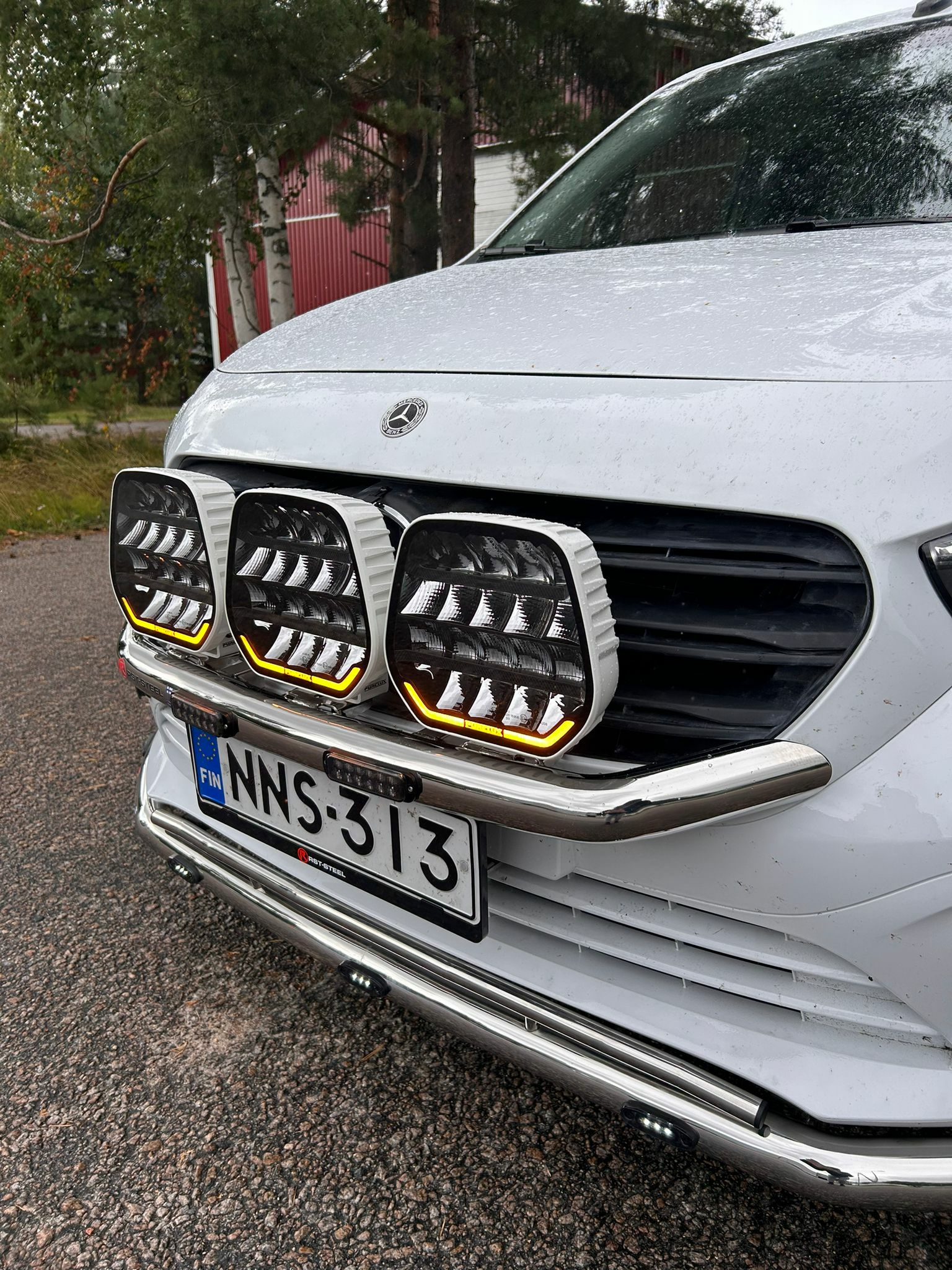Auxiliary lights typically consume 10–50 watts per light depending on the type and size. LED auxiliary lights are significantly more energy-efficient, drawing only about a third of the current of halogen lights. Total consumption depends on the number of installed lights and whether they are used simultaneously.
Why knowing the power consumption of auxiliary lights is important
Understanding the power consumption of auxiliary lights is essential for the functionality of the vehicle’s electrical system and battery life. Installing lights that are too powerful or incorrectly sized can overload the charging system.
Auxiliary lights significantly improve visibility and driving safety, especially in the dark and under challenging weather conditions. However, their effect on the vehicle’s electrical system must be considered during installation.
The car’s alternator and battery are designed for a specific load. Extra consumption can cause battery problems or shorten the lifespan of electrical components significantly.
How much current do LED auxiliary lights consume compared to halogen?
LED auxiliary lights consume far less current than traditional halogen lights. A typical LED auxiliary light uses 10–30 watts, while a comparable halogen light consumes 35–55 watts.
For example, a 20W LED light draws about 1.7 amps in a 12-volt system, whereas a 55W halogen light draws nearly 5 amps. The difference is significant, especially when multiple lights are installed.
| Light type |
Power (W) |
Current (A) |
| LED auxiliary |
20W |
1.7A |
| Halogen light |
55W |
4.6A |
| Lazer auxiliary |
15–25W |
1.3–2.1A |
Lazer auxiliary lights represent top technology in energy efficiency, providing excellent light distribution with minimal current draw.
Do auxiliary lights affect the vehicle’s battery life?
Auxiliary lights affect the car battery during both operation and when the engine is off. Battery capacity must match the total consumption and usage time.
While the engine is running, the alternator supplies power to the auxiliary lights, but excessive load can strain the system. When the engine is off, lights draw power directly from the battery.
To protect the battery:
-
Choose energy-efficient LED lights
-
Install an automatic shut-off relay
-
Avoid prolonged use with the engine off
-
Regularly check battery condition
How to calculate total current draw of auxiliary lights
Total current draw is calculated by dividing the combined wattage of the lights by the vehicle voltage. Formula: Amps = Watts ÷ 12V.
For example, four 20W LED lights have a total of 80 watts, which corresponds to about 6.7 amps. This is a reasonable load for most vehicles.
To evaluate overall impact:
-
Add up all the wattage of the lights
-
Divide by 12 to get amperes
-
Compare with the alternator’s capacity
-
Ensure total consumption does not exceed 10–15% of alternator capacity
Key points on auxiliary light power consumption
Managing power consumption is crucial for the longevity of the vehicle’s electrical system. LED technology provides the best combination of power and efficiency.
For safe operation, professional assistance is recommended, especially when installing multiple lights or high-power work lights. Correct wiring and protection ensure system reliability.
The benefits of LED technology in power consumption make it a clear choice for new installations. Investing in high-quality LED lighting pays off through lower power use and longer service life.
Kontakt oss
Explore our selection and get in touch to find auxiliary lights that perfectly meet your needs.




